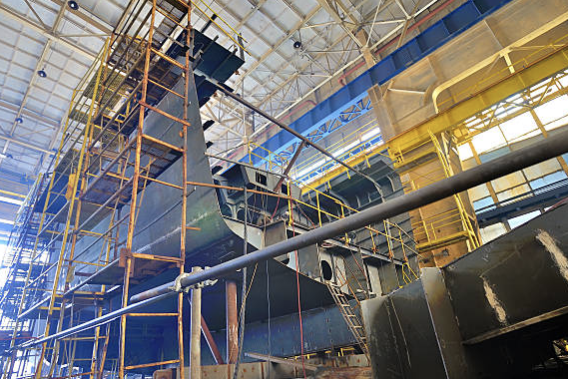
Posted on Wednesday, November 2, 2022
Naval vessel manufacturing stands at the heart of the shipbuilding industry, integrating advanced technology and engineering to produce vessels that ensure maritime security and operational excellence. The process is a perfect marriage of craftsmanship and cutting-edge machinery, allowing the production of state-of-the-art naval ships.
This blog explores the machines used in naval vessel manufacturing, the components they create, a case study of modern destroyer construction, and a guide for shipbuilding facilities to invest in fabrication machines. A question-and-answer section at the end will address common queries, and "what is" and "what are" questions provide foundational insights.
The machines in naval vessel manufacturing contribute to creating essential ship components such as:
The construction of a modern destroyer demonstrates how automated fabrication systems revolutionize shipbuilding.
The destroyer is constructed faster, with improved safety standards, and offers superior performance, demonstrating how automation elevates shipbuilding to new heights.
Naval shipyards require substantial investment in machinery to stay competitive. Here’s a guide for making smart investments:
Naval vessel manufacturing involves designing and constructing military ships, including destroyers, aircraft carriers, submarines, and support vessels, to ensure maritime defense and operations.
Plasma cutters are used for cutting thick steel plates into precise shapes and sizes needed for ship panels, hulls, and other structural components.
Robotic welders ensure accuracy, efficiency, and safety during the ship assembly process. They handle complex welding tasks that would be time-consuming and error-prone if done manually.
Surface grinders smooth and finish components like propellers and radar mounts, ensuring they meet performance and safety standards.
Automation enhances productivity, reduces costs, and ensures consistent quality in processes like cutting, welding, and assembly.
Naval vessel manufacturing is a cornerstone of the global shipbuilding industry, leveraging advanced machines like plasma cutters, robotic welders, and surface grinders to create vital components. From constructing hulls to refining radar mounts, these machines deliver unmatched precision and efficiency. By investing wisely in fabrication technology, shipyards can elevate their capabilities and meet the ever-evolving demands of modern naval operations.

Understanding Coil IDs, Mandrel Sizing, and Shear Pin Safety in Uncoilers
Posted on Wednesday, October 1, 2025
Mismatched sizes can lead to machine damage, downtime, and safety hazards — often evidenced by a shear pin failure.

How Coil Tensile Strength Affects Roll Forming and How to Adjust Your Machine
Posted on Wednesday, October 1, 2025
Changes in tensile strength can significantly affect the finished profile, causing misaligned bends, uneven edges, and out-of-spec parts.

Why Paint Cracks on an Embossing Line Running Pre-Painted Coil and How to Prevent It
Posted on Wednesday, October 1, 2025
This issue not only affects the visual quality of the product but can also lead to increased scrap rates and customer complaints.

The Most Popular Standing Seam Metal Roof Panels in the U.S. — A Comprehensive Guide
Posted on Monday, September 29, 2025
In this post, we’ll explore what panel styles and sizes are most popular in the U.S